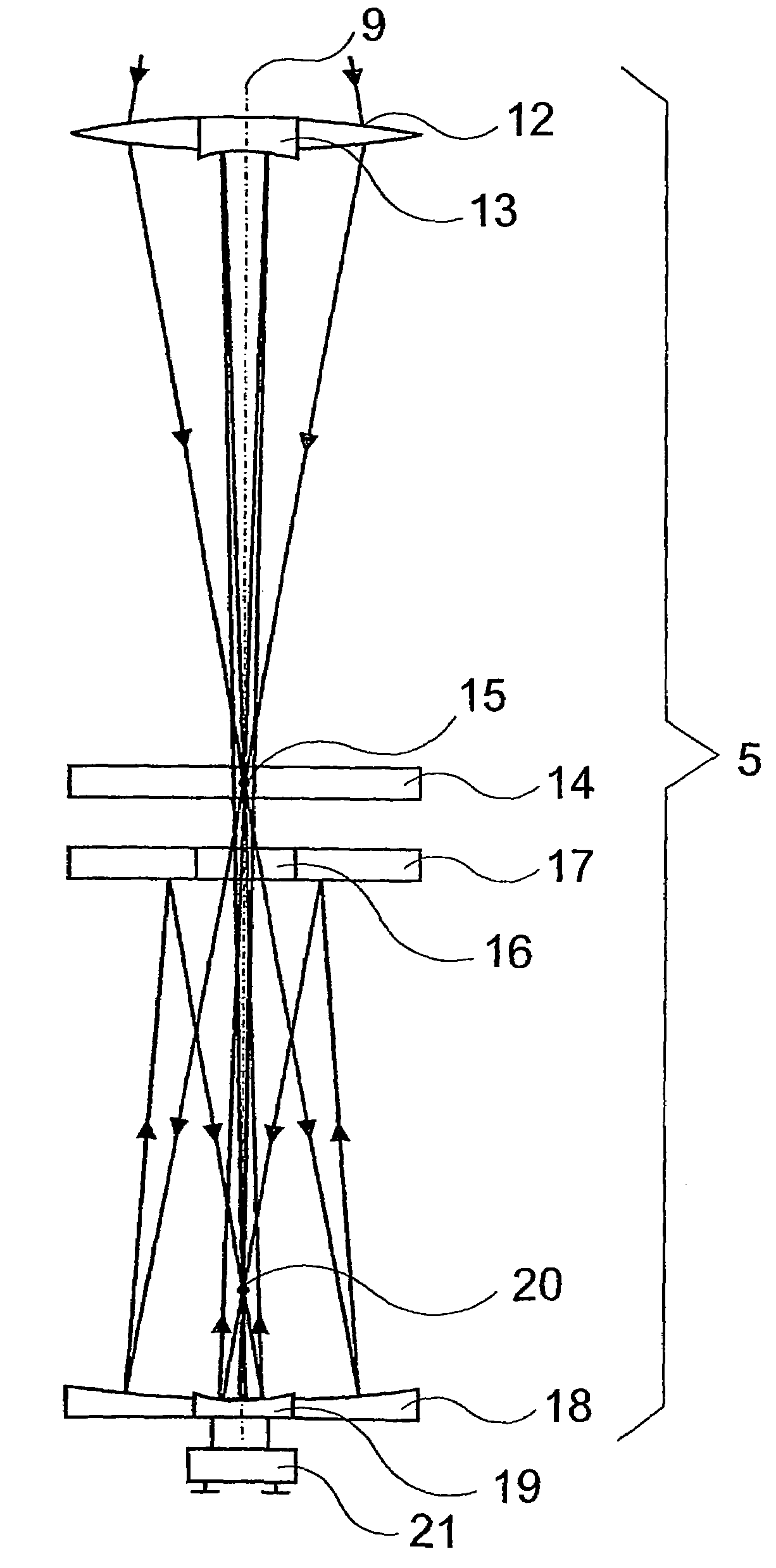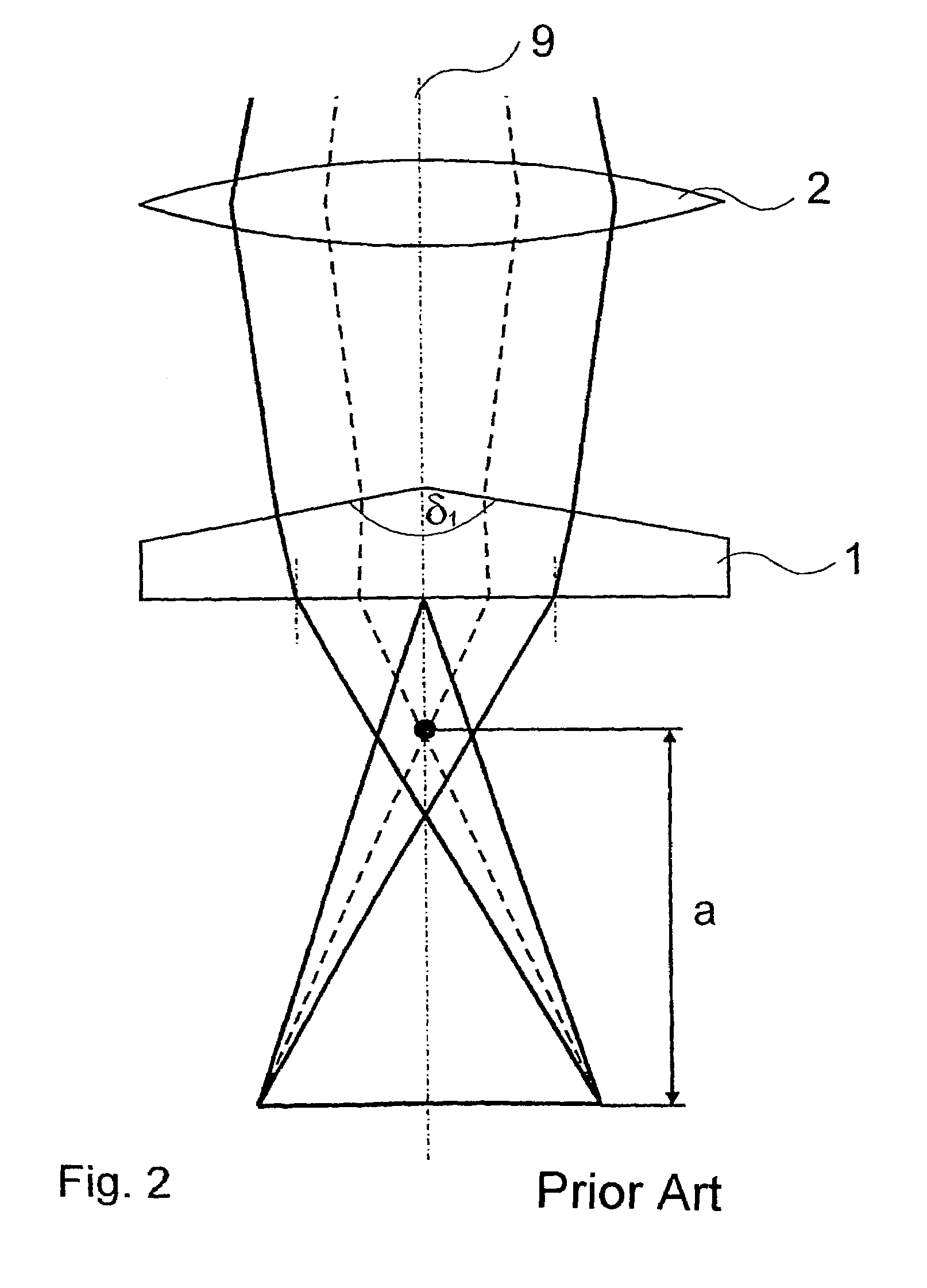Beam formation unit comprising two axicon lenses, and device comprising one such beam formation unit for introducing radiation energy into a workpiece consisting of a weakly-absorbent material
a technology of weakly absorbent material and beam formation unit, which is applied in the direction of glass making apparatus, instruments, lasers, etc., can solve the problems of insufficient energy loss, insufficient beam focus on the surface of the workpiece, and insufficient beam focus
- Summary
- Abstract
- Description
- Claims
- Application Information
AI Technical Summary
Benefits of technology
Problems solved by technology
Method used
Image
Examples
Embodiment Construction
[0044]An arrangement according to the invention substantially comprises a radiation source 6, a beam-shaping unit 4 and a resonator unit 5. The two axicons that are used in the beam-shaping unit 4 take on a central function. Therefore, to facilitate understanding of the invention, FIG. 1 first illustrates the basic function of an individual axicon 1 which is characterized by the cone angle δ. The incident beam bundle, which is assumed to be slightly divergent and symmetric with respect to rotation, e.g., with a Gaussian or rectangular (top-hat) intensity cross section, impinges on the beam-shaping side (conical surface) of the first axicon 1 orthogonally and so as to be exactly centered. As a result of the refraction at its conical surface, the beam exits the first axicon 1 as a divergent ring. The central beams (shown as a dashed line) intersect at a point lying on the optical axis 9 (shown as a dash-dot line); the symmetry of the beam bundle with respect to rotation must always be...
PUM
| Property | Measurement | Unit |
|---|---|---|
| diameter | aaaaa | aaaaa |
| radiation energy | aaaaa | aaaaa |
| reflection | aaaaa | aaaaa |
Abstract
Description
Claims
Application Information
 Login to View More
Login to View More - R&D
- Intellectual Property
- Life Sciences
- Materials
- Tech Scout
- Unparalleled Data Quality
- Higher Quality Content
- 60% Fewer Hallucinations
Browse by: Latest US Patents, China's latest patents, Technical Efficacy Thesaurus, Application Domain, Technology Topic, Popular Technical Reports.
© 2025 PatSnap. All rights reserved.Legal|Privacy policy|Modern Slavery Act Transparency Statement|Sitemap|About US| Contact US: help@patsnap.com



